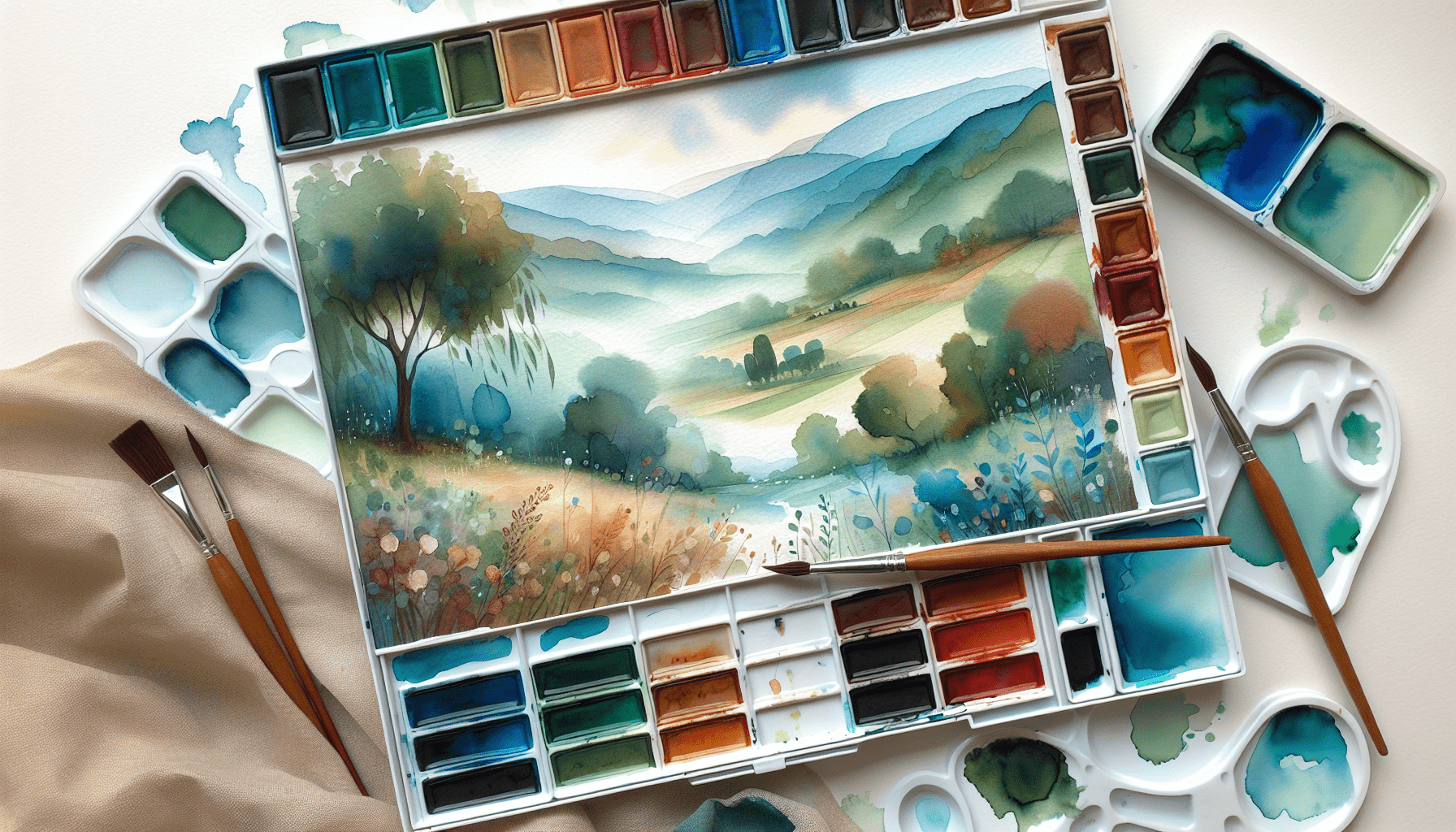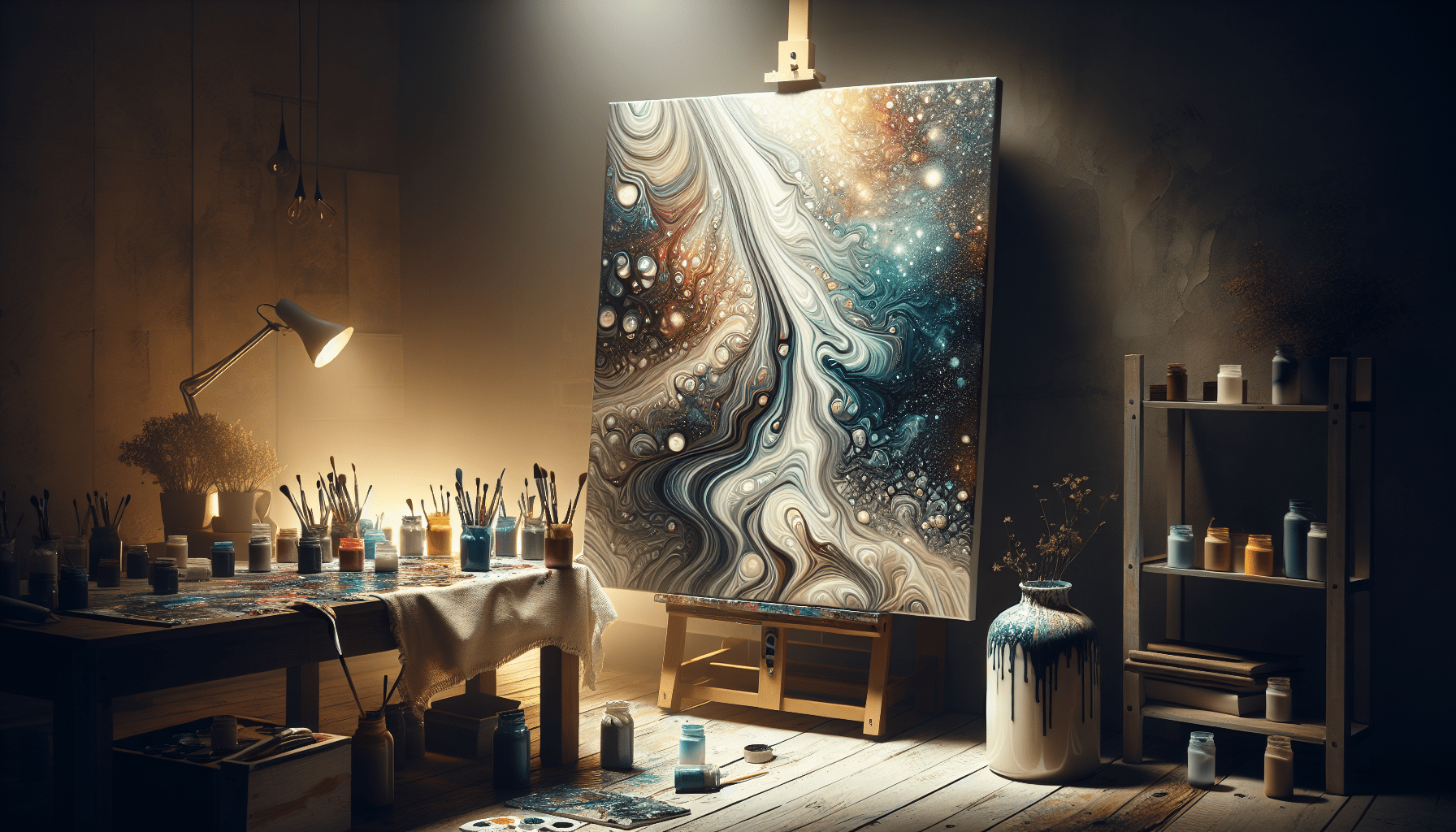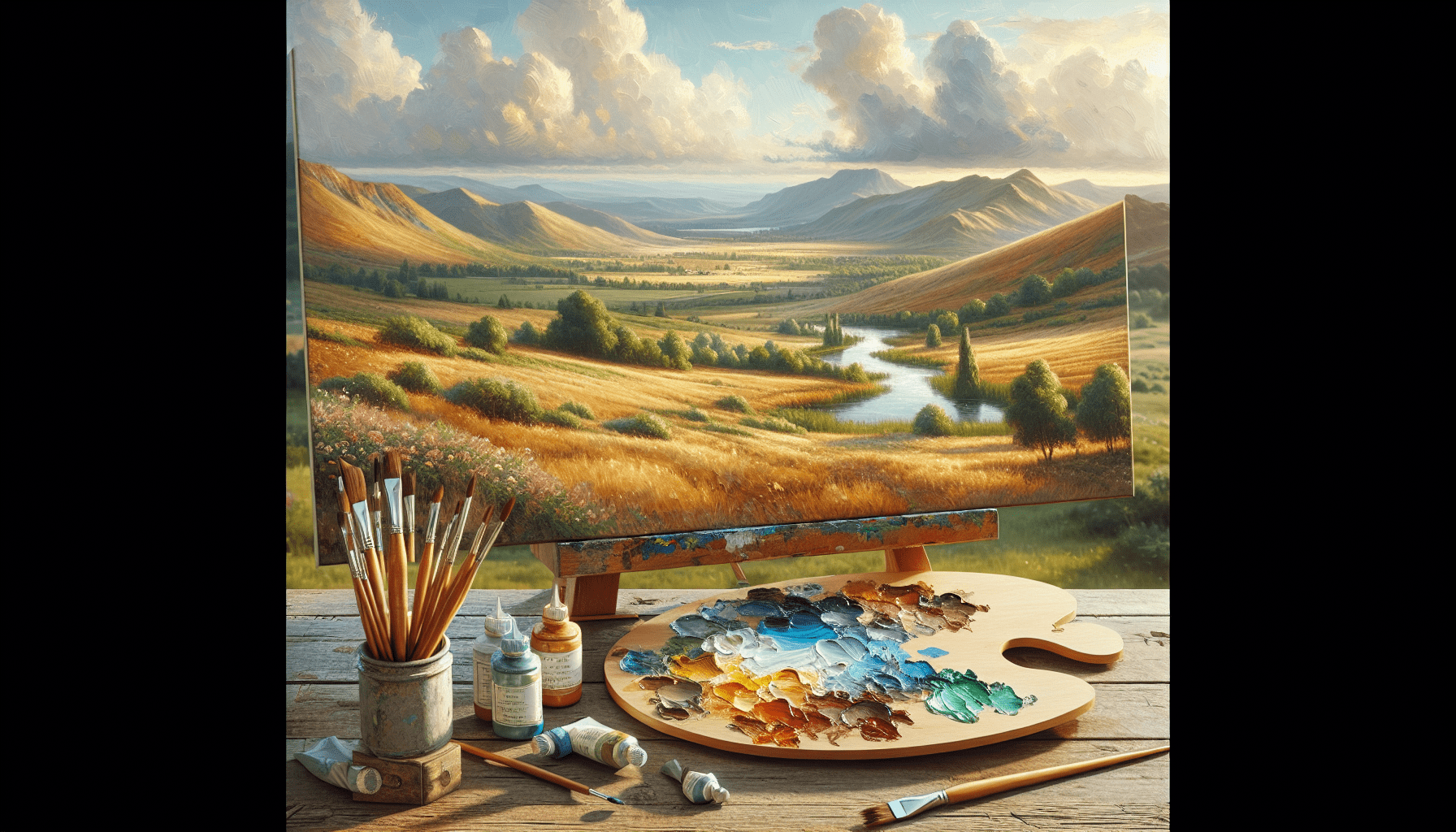Have you ever considered the intricate beauty of capturing a landscape’s essence through watercolor painting? Watercolor is a delicate and expressive medium that can uniquely capture the subtleties of light, color, and texture in a landscape. With its translucent quality, it allows for a play with layers and light that few other mediums can offer. Whether you’re a seasoned artist or a beginner, embarking on the journey of creating a landscape painting with watercolor can be both rewarding and challenging.
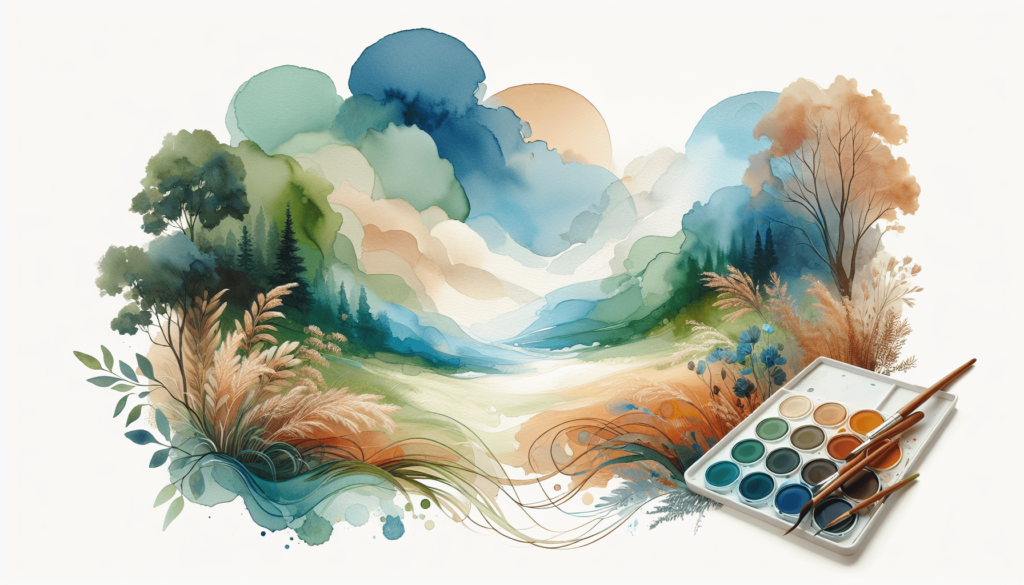
Understanding Watercolor Painting
Before you begin painting, it’s crucial to understand what makes watercolor a unique medium. Unlike oil or acrylic paints, watercolors rely on the transparency of the pigment, allowing the white of the paper to shine through and illuminate the colors. Watercolor paintings are generally lighter and more ethereal, characterized by their fluidity and ease of blending. However, this also means that corrections can be more challenging, requiring a balance between planning and spontaneity.
The Importance of Materials
The right materials can significantly impact the success of your watercolor painting. Watercolors, brushes, and paper each play critical roles in the outcome of your artwork. Investing in quality materials can make a noticeable difference in the painting process and the final product.
Watercolor Paints
Watercolor paints come in different forms: tubes, pans, and liquid forms. Tubes offer vibrant, concentrated pigments, ideal for strong washes and mixing large quantities of color. Pans are more compact and convenient, great for smaller works and portability. Liquid watercolors are highly concentrated and can be used to create bold effects.
Quality Brushes
Brushes come in various shapes and sizes, each suited for different techniques. Round brushes are versatile, suitable for both detailed work and broader strokes. Flat brushes are excellent for washes and precise edges. A good quality brush will hold a fine point and retain its shape even after extensive use.
Watercolor Paper
The choice of paper significantly influences the finished piece. Watercolor paper is available in different weights and textures, including hot-pressed, cold-pressed, and rough. Hot-pressed paper is smooth, suitable for fine details. Cold-pressed paper has a moderately textured surface, favored for its versatility. Rough paper offers a pronounced texture, ideal for expressive, textured brushwork.
Preparing to Paint
Preparation is key to successful watercolor painting. Proper planning ensures that you have a clear composition and a solid foundation before you start applying paint.
Choosing a Scene
Selecting a landscape scene is the first step. Consider what elements you find inspiring, whether it’s a serene beach, a bustling forest, or a majestic mountain range. Your choice should resonate with you, as this will keep you motivated throughout the painting process.
Sketching the Composition
A preliminary sketch helps you establish the composition and placement of various elements within the landscape. Use a light pencil to sketch the major shapes and forms. Concentrate on the most important features, such as the horizon line, focal points, and large masses of color. Remember, this sketch serves as a guide and doesn’t need excessive detail.
Techniques in Watercolor Landscape Painting
Understanding and practicing various watercolor techniques will enhance the richness and depth of your landscape painting. These methods help you create textures, capture light, and convey mood.
Washes
Washes form the base layers of your painting, establishing the overall tone and color palette.
Flat Wash
A flat wash involves covering an area with a uniform layer of color. To achieve this, load your brush with plenty of pigment and water. Start the stroke at the top of your paper and move across the surface in an even motion. This technique is useful for skies or bodies of water.
Graded Wash
A graded wash transitions from dark to light. Begin with a strong pigment at the top and gradually add more water as you work downward. This technique is perfect for creating depth and dimension in skies or water.
Wet-on-Wet
The wet-on-wet technique involves applying wet pigment onto a wet surface, allowing the colors to blend and bleed into each other. This approach is ideal for creating soft edges and backgrounds, such as blurred foliage or distant hills. The unpredictability of this method can result in beautiful, organic patterns.
Dry Brush
Dry brushing involves using a brush with very little water to create texture. By dragging the brush lightly across the paper, you can mimic the grain of wood, the texture of rocks, or the movement of grasses. This technique adds a tactile quality to your paintings and can suggest detail without heavy outlines.
Developing Your Landscape
Once you have a clear plan and understanding of techniques, begin developing your landscape from background to foreground. This layered approach ensures depth and coherence in your work.
Background
Start with the lightest areas and work toward the darker tones. The background sets the scene, generally consisting of skies, distant hills, or bodies of water. Use the graded wash technique to create a sky that transitions from warm to cool tones, suggesting a time of day.
Midground
The midground gives a sense of scale and context. Trees, fields, or buildings are often present here. Use a variety of techniques to suggest texture and details without overpowering the background. This section should naturally connect the background to the more detailed foreground elements.
Foreground
The foreground generally contains the most detail. Here, your use of dry brush and more pronounced strokes can accurately portray textures and create a focal point. Consider varying your brushwork to suggest different materials and surfaces, such as rocks, foliage, and water.
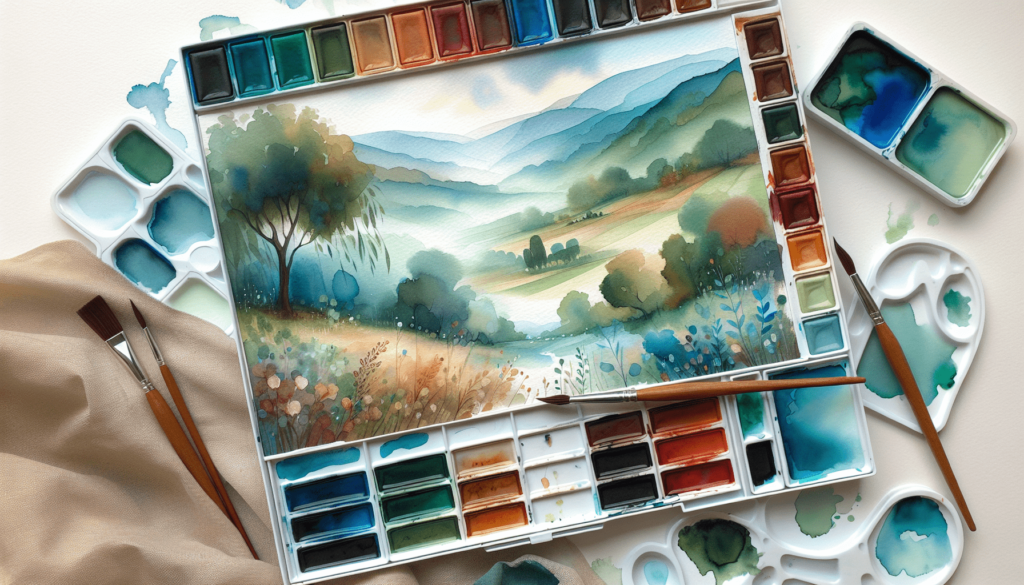
Working with Color
Understanding color theory and how it applies to your painting is crucial. Watercolor’s translucency allows colors to blend beautifully, but it requires skill to manage.
Color Mixing
Mixing colors directly on your palette—rather than relying on premixed colors—can lead to more harmonious and natural results. Always test your mixed colors on a scrap piece of paper first, as the colors can look different when dry.
Harmonize Your Palette
A limited palette can unify your painting, reducing complexity and promoting cohesion. Using analogous colors (colors that are next to each other on the color wheel) can create harmonious and peaceful scenes, whereas complementary colors (colors opposite each other on the color wheel) can add vibrancy and contrast.
Finishing Touches
Once your landscape is mostly complete, you can focus on the final details and refinements that will bring your painting to life.
Adding Highlights
A few strategic highlights can dramatically enhance the realism and impact of your painting. Consider using a white gouache or watercolor pencil for fine highlights that can’t be achieved with watercolor paint alone, given its transparency.
Consistency and Corrections
Finally, step back and view your work from a distance to evaluate its overall balance and composition. Consistency in lighting, perspective, and color will contribute to the painting’s authenticity. If any areas appear unbalanced or jarring, make corrections carefully. Remember, watercolor is less forgiving when it comes to corrections, so proceed with caution.
Conclusion
Painting a landscape with watercolor involves a blend of skill, practice, and intuition. While the process can be daunting, approaching it with patience and an open mind makes each painting a learning experience. With practice, you’ll develop a keen understanding of how to manipulate water and pigment to capture the delicate beauty of the natural world. Your watercolor landscapes will not only reflect the scenery but also your personal interpretation and artistic voice.
